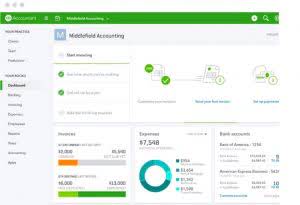
The company notes that its business depends on a limited number of key facilities. The suspension of operations at any of these complexes or significant impacts on any of their operations as a result of a supply chain disruption could adversely affect production capacity. Additionally, in the local context of the United States, an increase in imported agricultural products could adversely affect the business of the company. Under this strategy, I would expect lower net sales volatility in the coming years.
- The financial statement only captures the financial position of a company on a specific day.
- If there are more line items than simply common shares, a paid-in capital subtotal is also required for IFRS companies.
- Receivables of all types are normally reported on the balance sheet at their net realizable value, which is the amount the company expects to receive in cash.
- Assets and liabilities come from several sources and are usually separated into current and non-current (IFRS) or long-term (ASPE) categories.
- Over 1.8 million professionals use CFI to learn accounting, financial analysis, modeling and more.
- Notes receivables are written promissory notes which give the holder or bearer the right to receive the amount mentioned in the agreement.
Banks, lenders, and other institutions may calculate financial ratios off of the balance sheet balances to gauge how much risk a company carries, how liquid its assets are, and how likely the company will remain solvent. Some companies issue preferred stock, which will be listed separately from common stock under this section. Preferred stock is assigned an arbitrary par value (as is common stock, in some cases) that has no bearing on the market value of the shares.
Intermediate Financial Accounting 1
The A/R turnover ratio is a measurement that shows how efficient a company is at collecting its debts. It divides the company’s credit sales in a given period by its average A/R during the same period. The result shows you how many times the company collected its average A/R during that time frame. The lower the number, the less efficient a company is at collecting debts. If one customer or client represents more than 5% or 10% of the accounts payable, there is exposure, which might be cause for concern. To free up cash flow and increase the speed at which they can access funds, many companies offer an early-pay discount on longer A/R balances to try to get their clients to pay them sooner.
- NetSuite has packaged the experience gained from tens of thousands of worldwide deployments over two decades into a set of leading practices that pave a clear path to success and are proven to deliver rapid business value.
- When the note’s maturity rises after the completion of 90 days, the interest amount is paid to MPC.
- Considering the current balance sheet and FCF generation, I believe that LSB is in a position to deliver some of these initiatives.
- With NetSuite, you go live in a predictable timeframe — smart, stepped implementations begin with sales and span the entire customer lifecycle, so there’s continuity from sales to services to support.
- If a subsequent event is significant but relates to operations occurring after the reporting period, it is to be included in the notes.
Assets can be broadly categorized into Current Assets and Non-Current Assets. Current assets are likely to generate a return for the company within 12 months. Long-term liabilities are obligations that are not reasonable expected to be liquidated (paid) within the normal operating cycle but instead are payable as some later date. If the commitment is subsequently exercised during the commitment period, the remaining unamortized commitment fee at the time of exercise shall be recognized over the life of the loan as an adjustment of yield. The term remote is used here, consistent with its use in Topic 450, to mean that the likelihood is slight that a loan commitment will be exercised before its expiration.
Notes Receivable Terms
Notes receivables are written promissory notes which give the holder or bearer the right to receive the amount mentioned in the agreement. Sometimes accounts receivables are converted into notes receivables to allow the debtors to pay the balance. Notes receivable are amounts owed to the company by customers or others who have signed formal promissory notes in acknowledgment of their debts. Promissory notes strengthen a company’s legal claim against those who fail to pay as promised.

The best way to understand accounts receivable is to view a transaction and how it ends up on the balance sheet. The fact that the company lost most of its market capitalization in the last three years is what made me conduct certain research on the stock. It trades now at close to $9-$10 per share, but it traded at close to $25-$27 per share in the past. LSB industries delivered better than expected EPS GAAP as well as a revenue surprise. I really do not think that the market reacted well to the news as the stock price is still trading only a bit higher than before the release.
Notes receivable accounting
However, it must be duly noted that only those transactions are supposed to be recorded as other receivables that are certain to be received. Transactions that are contingent or are unlikely to happen should be included in other receivables. However, other than that, it can be seen that there can be several other cases where other receivables might exist on the company’s balance sheet. If the note has more than a year and the customer doesn’t pay interest in the first year, unpaid interest should be added to the beginning principal balance in the second year, and interest is to be calculated on this new value. Note that the measurement basis disclosures are in parenthesis for any assets where a measurement other than cost is possible. Also note the interest rate and due date parenthetical disclosure for the long-term liability.
Now, with FCF between $49 million and $151 million, exit multiples ranging between 7x and 11x, and a WACC of 4%-7%, I obtained a fair forecast price ranging from $13 to $23 per share. Note that for the calculation of the enterprise value, I included cash, short term investments, short term debt, and long term debt. Accounts within this segment are listed from top to bottom in order of their liquidity.
What are Notes Receivable?
They are divided into current assets, which can be converted to cash in one year or less; and non-current or long-term assets, which cannot. Accounting is full of estimates that are based on the best information available at the time. Examples of changing estimates would be the useful life, https://www.bookstime.com/ residual value, or the depreciation pattern used to match the use of assets with revenues earned. Other changes in estimates involve uncollectible receivables, asset impairment losses, and pension assumptions that could affect the accrued pension asset/liability account in the SFP/BS.
- Additional disclosures such as unamortized net fees and costs may be included in the notes to the financial statements if the lender believes that such information is useful to the users of financial statements.
- A company must also usually provide a balance sheet to private investors when attempting to secure private equity funding.
- Company A sells machinery to Company B for $300,000, with payment due within 30 days.
- You subtract the $1,100 from accounts receivable and enter it into notes receivable.
- These were first introduced in the introductory accounting course and will also be discussed in detail in the next intermediate accounting course.
- If your customers owe debts that have promissory notes attached, you record the debts under notes receivable.
It can be sold at a later date to raise cash or reserved to repel a hostile takeover. In accounting, a contingency (ASPE) or provision (IFRS) exists when a material future event, or circumstance, could occur but cannot be predicted with certainty. notes receivable IFRS (IAS 37.10) has the following definitions regarding the various types of contingencies in accounting (IFRS, 2015). Current assets are those assets that are converted into cash within the operating cycle or one year, whichever is longer.
